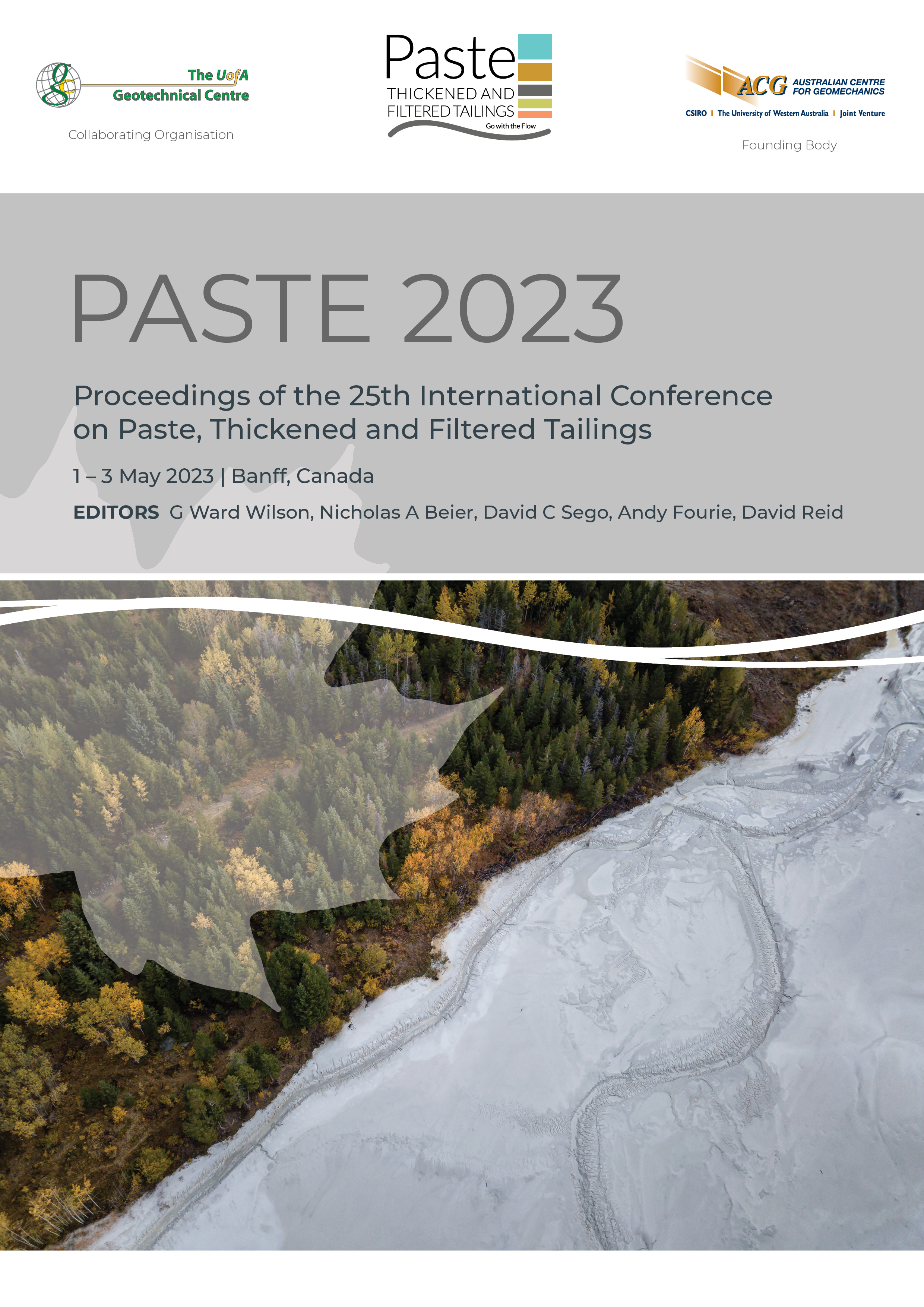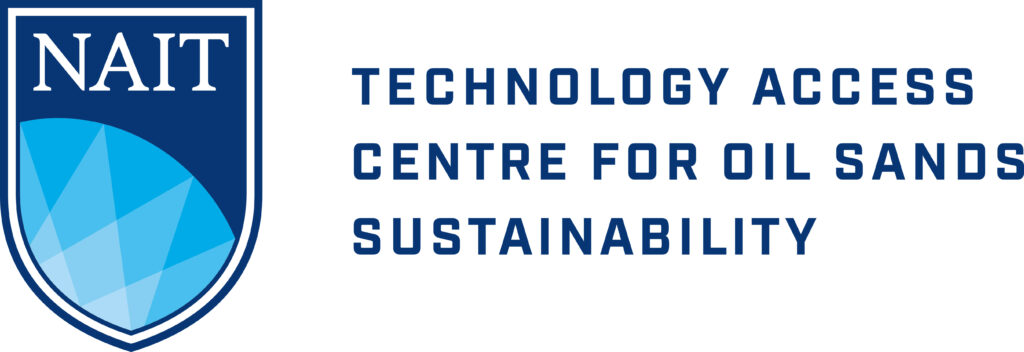How high is too high? Challenges on the next generation of dewatered tailings stacks

|
Authors: Norambuena Mardones, RE; Caldwell-Crystal, C; Cobos, D |
DOI https://doi.org/10.36487/ACG_repo/2355_35
Cite As:
Norambuena Mardones, RE, Caldwell-Crystal, C & Cobos, D 2023, 'How high is too high? Challenges on the next generation of dewatered tailings stacks', in GW Wilson, NA Beier, DC Sego, AB Fourie & D Reid (eds), Paste 2023: Proceedings of the 25th International Conference on Paste, Thickened and Filtered Tailings, Australian Centre for Geomechanics, Perth, pp. 465-479, https://doi.org/10.36487/ACG_repo/2355_35
Abstract:
Building on the experience of successful smaller-scale dewatered tailings stack operations with production rates of up to 35,000 tpd, filter-pressed tailings stacking is being considered as a technically and economically viable alternative of dewatered tailings management for even higher production rates, pushing 50,000 to 100,000 tpd, involving intensive earthworks operations and intricate construction sequencing plans. The need to establish dewatered tailings solutions as a sound business option for large-scale projects in water-stressed nations like Chile and Mexico is motivated by water (the lack of availability, rising cost of water and sustainable water use) but also by dam safety, lowering the risk profile of the large conventional tailings storage facility portfolios. This paper will present the fundamental aspects of the design and operation of dewatered stacks based on practical planning and operational experience. This will ultimately provide some guidance on "how high is too high?" in the context of critical state soil mechanics and other relevant geotechnical aspects and a case study providing some reference on the planning of a dewatered stack.
Keywords: dewatered, stack, critical state, liquefaction, strain softening, brittle, filtration, tailings, compaction, height
References:
Aghazamani, N 2022, Unsaturated Fluid Flow and Volume Change Behaviour of Filtered Tailings, PhD thesis, Colorado State University, Fort Collins.
ASTM International 2011, Standard Test Methods for One-Dimensional Consolidation Properties of Soils Using Incremental Loading ASTM D2435, ASTM International, West Conshohocken.
ASTM International 2021a, Standard Test Method for Density and Unit Weight of Soil in Place by the Sand-Cone Method ASTM D1556, ASTM International, West Conshohocken.
ASTM International 2021b, Standard Test Methods for In-Place Density and Water Content of Soil and Soil-Aggregate by Nuclear Methods (Shallow Depth) ASTM D6938, ASTM International, West Conshohocken.
ASTM International 2021c, Standard Test Methods for Laboratory Compaction Characteristics of Soil Using Modified Effort (56,000 ft-lbf/ft3 (2,700 kN-m/m3)) ASTM D1557-12, ASTM International, West Conshohocken.
ASTM International 2021d, Standard Test Methods for Laboratory Compaction Characteristics of Soil Using Standard Effort (12,400 ft-lbf/ft3 (600 kN-m/m3)) ASTM D698-12, ASTM International, West Conshohocken.
Been, K & Jefferies, M 2016, Soil liquefaction: a critical state approach, 2nd edn, Taylor & Francis, London
Been, K 2016, ‘Characterizing mine tailings for geotechnical design’, Geotechnical and Geophysical Site Characterisation vol. 5, pp. 41−55, Australian Geomechanics Society, Sydney.
Bishop, A 1959, ‘The principle of effective stress’, Teknisk Ukeblad, vol. 106, no. 39, pp. 859−863.
Blight, G 2013, Unsaturated soil mechanics in geotechnical practice, Taylor & Francis, London.
CDA 2019, Technical Bulletin, Application of Dam Safety Guidelines to Mining Dams, Canadian Dam Association, Markham.
Davies, M, McRoberts, E & Martin, T 2002, ‘Static liquefaction of tailings - fundamentals and case histories’, Association of State Dam Safety Officials Conference, ASDSO, Lexington.
Delevingne, L, Glazener, W, Gregoir, L & Henderson, K 2020, Climate Risk and Decarbonization: What Every Mining CEO Needs to Know, McKinsey & Co,
Durocher, J, Sprague, D & Usher, B 2022, ‘Geochemical interaction and long-term TSF stability: an update’, Proceedings of Tailings and Mine Waste 2022, Colorado State University, Fort Collins.
Ghafghazi, M, Shuttle, D & DeJong, J 2014, ‘Particle breakage and the critical state of sand’, Soils and Foundations, vol. 54, no. 3, pp. 451−461.
ICOLD 2022, Tailings Dam Safety Bulletin No 194 Version 1.0, Committee Large Tailings Dams and Waste Lagoons.
Ledesma, O, Sfriso, A & Manzanal, D 2022, ‘Procedure for assessing the liquefaction vulnerability of tailings dams’, Computers and Geotechnics, vol. 144, no. 5.
Lupo, J & Hall, J 2010, ‘Dry stack tailings - design considerations’, Proceedings of the Fourteenth International Conference on Tailings and Mine Waste, A.A. Balkema, The Netherlands, pp. 327−334.
Macedo, J & Vergaray, L 2021, ‘Properties of mine tailings for static liquefaction assessment’, Canadian Geotechnical Journal, vol. 59, no. 5.
Morgan, AJ & Dobson, R 2020, An Analysis of Water Risk in the Mining Sector, Water Risk Filter Research Series 1, WWF.
Norambuena, R, Santos, E & Campana, J 2019, ‘Challenges of Completing dam break analyses on large (copper) tailings dams’, Proceedings of the Tailings and Mine Waste Conference 2019, Vancouver.
Norambuena, R, Ketilson, E & Garduno, G 2021, ‘Developing an observational approach for a TSF raise’, Proceedings of Tailings and Mine Waste 2021, Banff.
Peck, RB 1969, ‘Ninth Rankine lecture: advantages and limitations of the observational method in applied soil mechanics’, Geotechnique, vol. 19, no. 2, pp. 171−187.
Reid, D, Fourie, A, Ayala, J, Dickinson, S, Ochoa-Cornejo, F, Danni, R, … & Suazo, G 2021, ‘Results of a critical state line testing round robin programme’, Geotechnique vol. 71, no. 7, pp. 616−630.
Robertson, A & Shaw, S 1998, ‘Alternatives analysis for mine development and reclamation’, Proceedings of the 22nd Annual British Columbia Mine Reclamation Symposium in Penticton, British Columbia.
Rola, J 2020, ‘Critical state soil mechanics in filtered TSF design’, Mine Waste and Tailings Conference 2020, Colorado State University, Fort Collins.
Shuttle, D & Cunning, J 2008, ‘Reply to discussion: Liquefaction potential of silts from CPTu,’ Canadian Geotechnical Journal, vol. 45, no. 1, pp. 142−145.
Smith, J, Fanni, R, Chapman, P & Reid, D 2019, ‘Critical state testing of tailings: comparison between various tailings and implications for design’, Proceedings of Tailings and Mine Waste 2019, Vancouver.
Terzaghi, K 1925, ’Erdbaumechanik auf boden physikalischer Grundlage’ (Mechanics of earthworks based on soil physics), Franz Deuticke, Leipzig.
Tsukamoto, Y. 2018, ‘Degree of saturation affecting liquefaction resistance and undrained shear strength of silty sands’, Soil Dynamics and Earthquake Engineering, vol. 124, pp. 365−373.
Verdugo, R 1991, ‘The steady state of sandy soils’, Soils and Foundations, vol. 36, no.2, pp. 81−91.
Vick, S 2017, ‘Dam safety risk - from deviance to diligence’, ASCE Geo-Risk Conference, Denver.
Wagner, A 1957, ‘The use of the unified soil classification system by the Bureau of Reclamation’, Proceedings of the 4th International Conference of Soil Mechanics and Foundation Engineering, vol. I, p. 125.
Yoshimi, Y, Tanaka, K & Tokimatsu, K 1989, ‘Liquefaction resistance of a partially saturated sand’, Soils and Foundations, vol. 29, no. 3, pp. 15−162.
© Copyright 2026, Australian Centre for Geomechanics (ACG), The University of Western Australia. All rights reserved.
View copyright/legal information
Please direct any queries or error reports to repository-acg@uwa.edu.au
View copyright/legal information
Please direct any queries or error reports to repository-acg@uwa.edu.au



